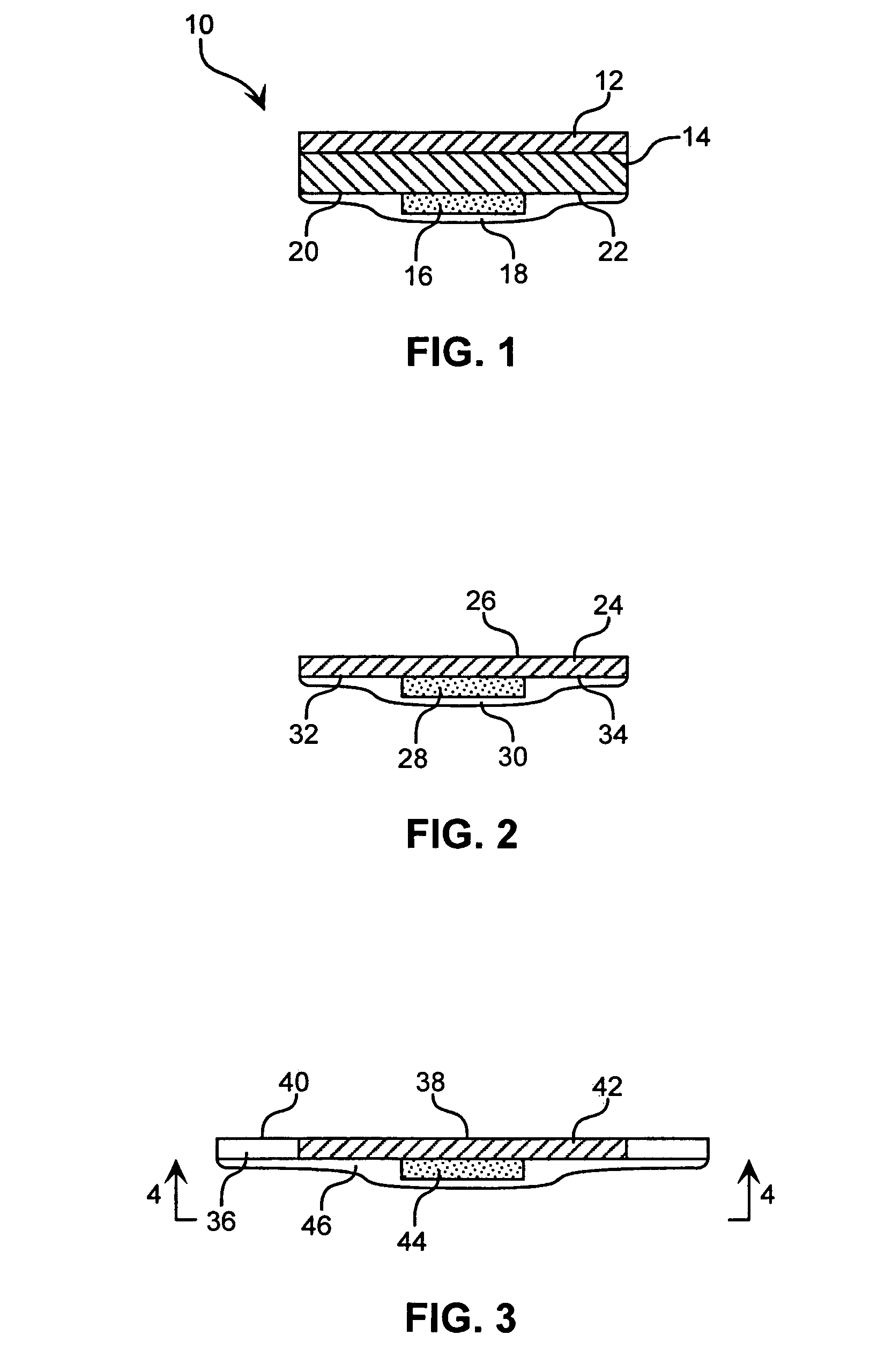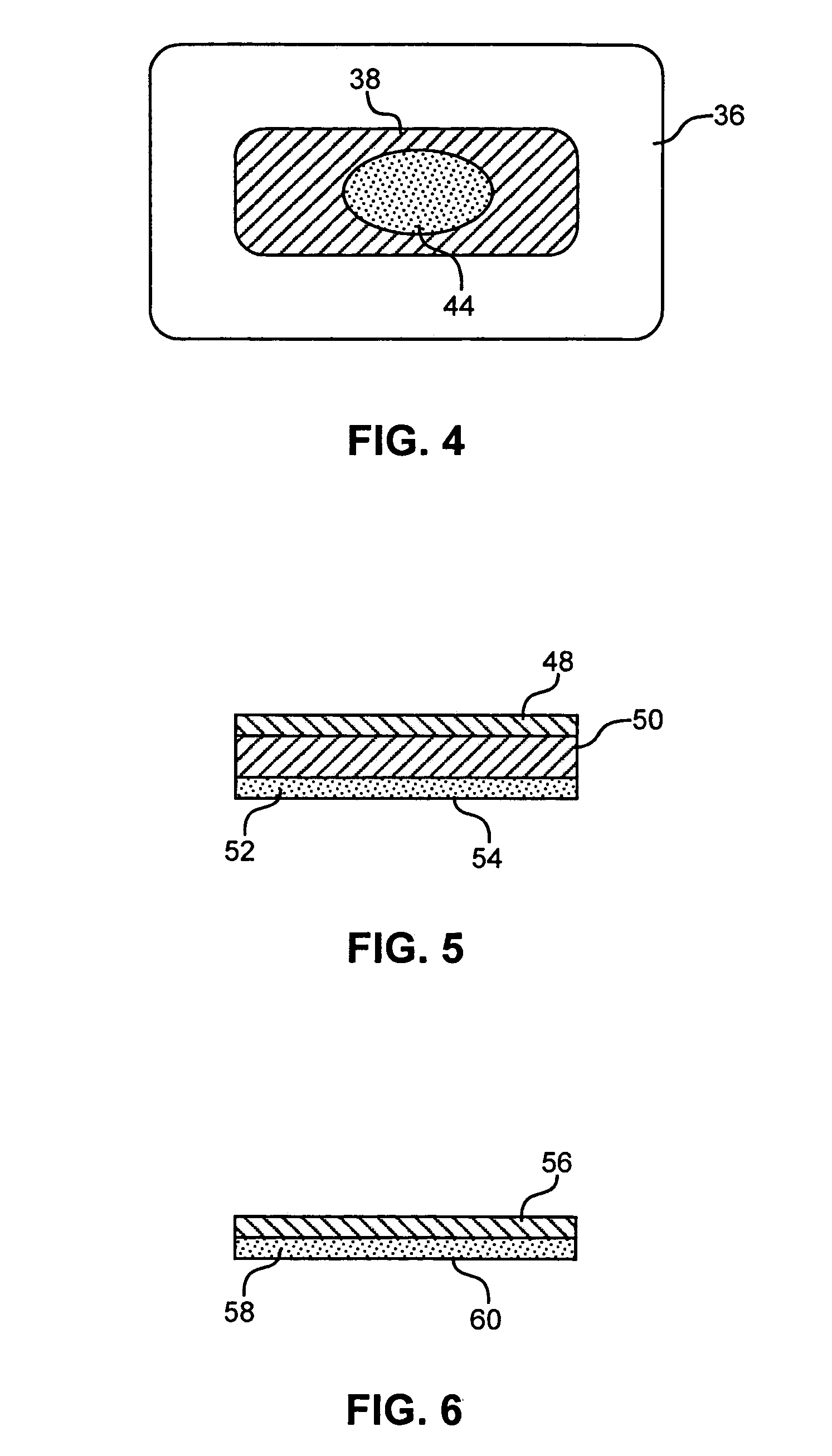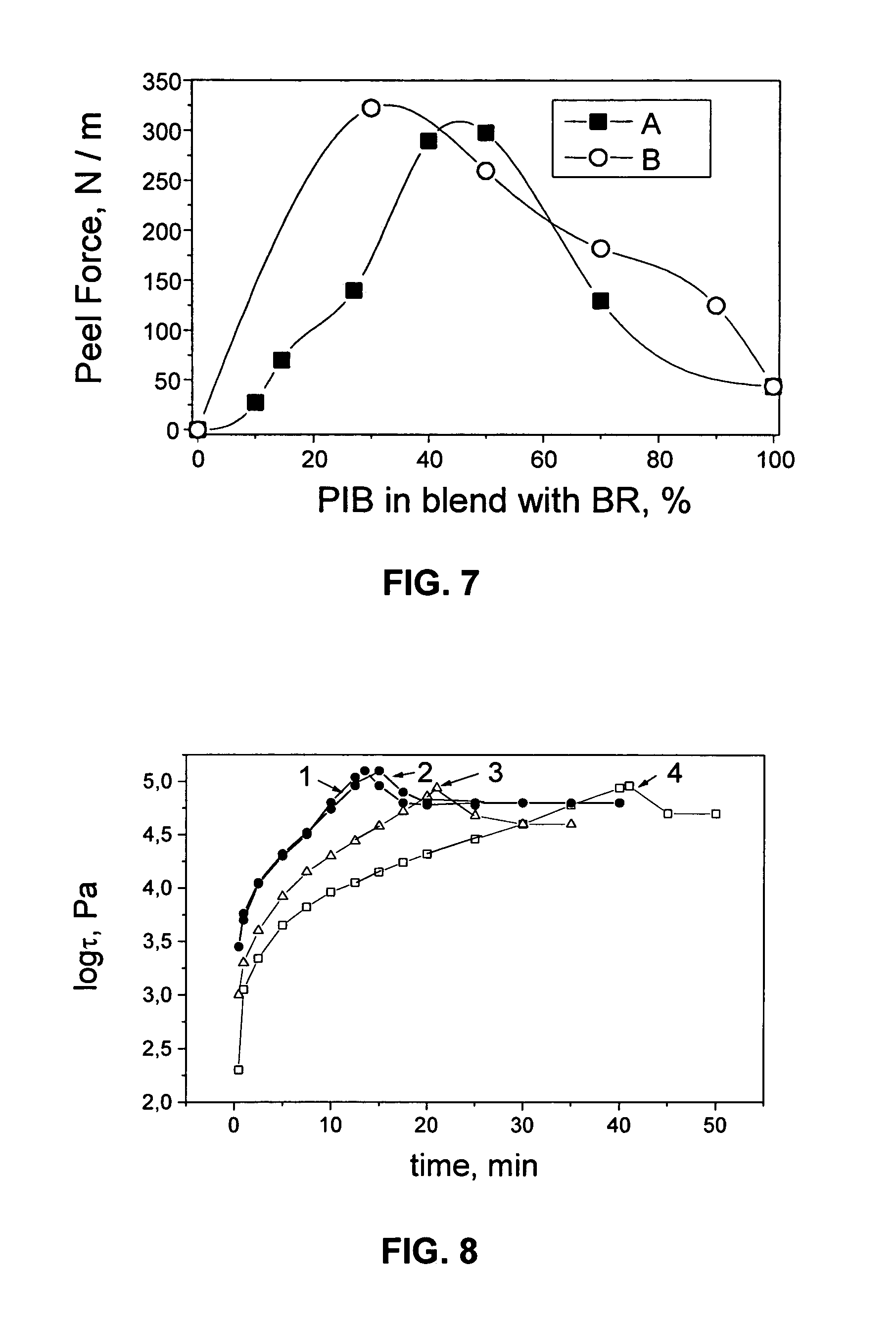Method for preparing a two-phase water-absorbent bioadhesive composition
a bioadhesive composition and water-absorbent technology, applied in the field of adhesive compositions, can solve the problems of bioadhesives becoming tacky, affecting the adhesion of pressure-sensitive adhesives, and exhibiting instant tack, so as to achieve the effect of optimizing absorption, adhesion strength, swelling and swelling
- Summary
- Abstract
- Description
- Claims
- Application Information
AI Technical Summary
Benefits of technology
Problems solved by technology
Method used
Image
Examples
example 1
[0141]The following example describe formulation of a pressure-sensitive adhesive composition based on a cured blend of polyisobutylene with butyl rubber with PVP-PEG water sorbents, and optionally with cellulose-based water sorbents, to form a two-phase adhesive matrix.
[0142]Mixing procedures for the adhesive blend: Two methods of mixing were used: a laboratory mixer of rotor-plunger type (I) and a Haake mixer supplied with a sigma-blade and Banbary rotors (II). With the latter method, a sample is loaded into a working chamber and heated to the desired temperature, at which point a rotating agitator was introduced to a predetermined depth to mix the composition. This procedure was repeated several times to obtain a homogeneous mixture. The temperature-time regime of mixing depended on the components used, particularly on the curing agent used. Usually, mixing may be carried out at a temperature >100° C. However, if Br-APFR was used as the curing agent, the temperature was decreased...
example 2
[0146]Curing a PVP-PEG hydrogel dispersed within the hydrophobic polymer:
[0147]Cured PVP-PEG hydrogels were found to be highly hygroscopic. At relatively low degrees of hydration, these hydrogels provide adhesive and viscoelastic properties that allow them to be used for SCA matrices in cushion patches. If, however, such hydrogels absorb more than about 15% water, they swell so much that they become unsuitable for cushion usage. In order to decrease the PVP-PEG hydrogel hygroscopicity, it was found useful to mix the hydrogel with an appropriate hydrophobic adhesive. The following experimental work was carried out to determine conditions under which such mixtures can be cured so that they become viscoelastic at room temperature and have adhesive properties suitable for use in cushion pads. In these experiments, a PVP-PEG hydrogel was mixed with a PIB-BR-Regalite adhesive. UV-curing to produce PVP-PEG crosslinking, employing dipentaerythritol monohydroxy pentaacrylate SR 399 (Sartomer...
example 3
[0149]Adhesive properties of PIB-BR blends with hydrophilic sorbents:
[0150]As shown in FIG. 10, mixing of a hydrophobic adhesive with 40% or more of a nonadhesive hydrophilic sorbent resulted in a gradual decrease of adhesion. If, however, the hydrophilic phase was the adhesive PVP-PEG hydrogel, the blending was not accompanied by a loss of adhesion. This trend was found to be typical of any hydrophobic adhesive and hydrophilic sorbent.
PUM
| Property | Measurement | Unit |
|---|---|---|
| molecular weight | aaaaa | aaaaa |
| molecular weight | aaaaa | aaaaa |
| molecular weight | aaaaa | aaaaa |
Abstract
Description
Claims
Application Information
 Login to View More
Login to View More - R&D
- Intellectual Property
- Life Sciences
- Materials
- Tech Scout
- Unparalleled Data Quality
- Higher Quality Content
- 60% Fewer Hallucinations
Browse by: Latest US Patents, China's latest patents, Technical Efficacy Thesaurus, Application Domain, Technology Topic, Popular Technical Reports.
© 2025 PatSnap. All rights reserved.Legal|Privacy policy|Modern Slavery Act Transparency Statement|Sitemap|About US| Contact US: help@patsnap.com



